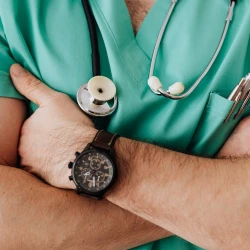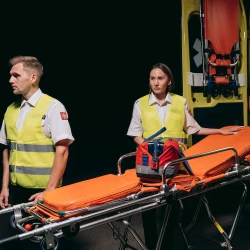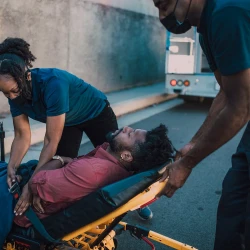Emergency Medical Technicians (EMTs) stand at the forefront of immediate medical response, delivering critical care in the precious initial moments after an accident or medical incident. Given the vital role EMTs play in patient outcomes, proper training in Basic Life Support (BLS) techniques is indispensable. This article delves deep into the core BLS techniques that EMT trainees at the Life Safety Institute must master.
Introduction to BLS:
Basic Life Support refers to the fundamental medical care provided to patients in life-threatening situations until they can receive more comprehensive care. These are non-invasive procedures that are crucial in maintaining patient breathing and circulation.
Scene Safety and Personal Protection:
Before any intervention, EMTs must ensure the scene is safe for both themselves and the patient. Personal protective equipment (PPE) like gloves and face shields protect EMTs from possible contaminants and pathogens.
Assessing Patient Responsiveness:
The initial step in any emergency is to check for patient responsiveness. Gently tap the patient and shout, asking if they're okay. The response, or lack thereof, dictates the next steps.
Airway Management:
Ensuring an open airway is paramount. The following steps facilitate this:
-
Head-Tilt, Chin-Lift Maneuver: Used on patients without suspected spinal injuries, it involves tilting the head backward and lifting the chin to open the airway.
-
Jaw-Thrust Maneuver: For patients with potential spinal injuries, pushing the angles of the lower jaw forward without moving the head opens the airway.
Breathing Assessment and Support:
After ensuring an open airway, assess if the patient is breathing:
-
If breathing is normal, continue with the patient assessment.
-
If breathing is absent or inadequate, provide rescue breathing—two initial breaths, watching for chest rise. Then, continue with one breath every 5-6 seconds.
Circulation and Chest Compressions:
If a patient lacks a pulse, chest compressions are essential to circulate blood:
-
Position hands (one atop the other) at the center of the chest.
-
Push hard and fast (at least 2 inches deep at a rate of 100-120 compressions/minute).
-
Allow the chest to recoil completely between compressions.
Automated External Defibrillators (AEDs):
An AED can be a lifesaver in cases of sudden cardiac arrest. EMTs should:
-
Power on the AED.
-
Attach the pads to the patient's bare chest as indicated.
-
Follow the AED’s voice prompts (e.g., stand clear, administer shock).
Choking Relief:
For a conscious, choking individual:
-
Ask if they're choking and if you can help.
-
For Children: With one hand supporting their chest, deliver five sharp blows between their shoulder blades using the heel of your other hand.
-
FOr Adults: perform abdominal thrusts (Heimlich maneuver): Stand behind the patient, place a fist between their navel and ribcage, grab your fist with the other hand, and give quick inward-upward thrusts.
For unconscious victims, initiate CPR, checking the mouth for obstructions between cycles.
Recovery Position:
If a patient with no trauma is breathing but unresponsive, place them in the recovery position:
-
Extend the arm nearest to you straight out from the body.
-
Place the far arm across the chest.
-
Lift the far leg over the straightened leg, then roll the patient towards you.
This position aids breathing and prevents aspiration.
Continuous Monitoring and Handoff:
Once BLS measures are in place, continuously monitor the patient. When higher medical aid arrives or the patient is transported, provide a clear, concise handoff report detailing the interventions performed and the patient's current status.
BLS for Special Populations:
BLS techniques might vary slightly for infants, children, and pregnant individuals. For instance, infant CPR requires two fingers for chest compressions, and a pregnant woman's chest compressions might need to be positioned higher due to the expanded uterus.
Conclusion:
EMTs equipped with adept BLS skills can drastically improve the survival and recovery chances of patients. The techniques outlined above form the foundation of emergency medical care. Through rigorous training and regular practice, EMT trainees at the Life Safety Institute can ensure they're well-prepared to face real-life emergencies, acting as the bridge between life-threatening situations and advanced medical intervention.



